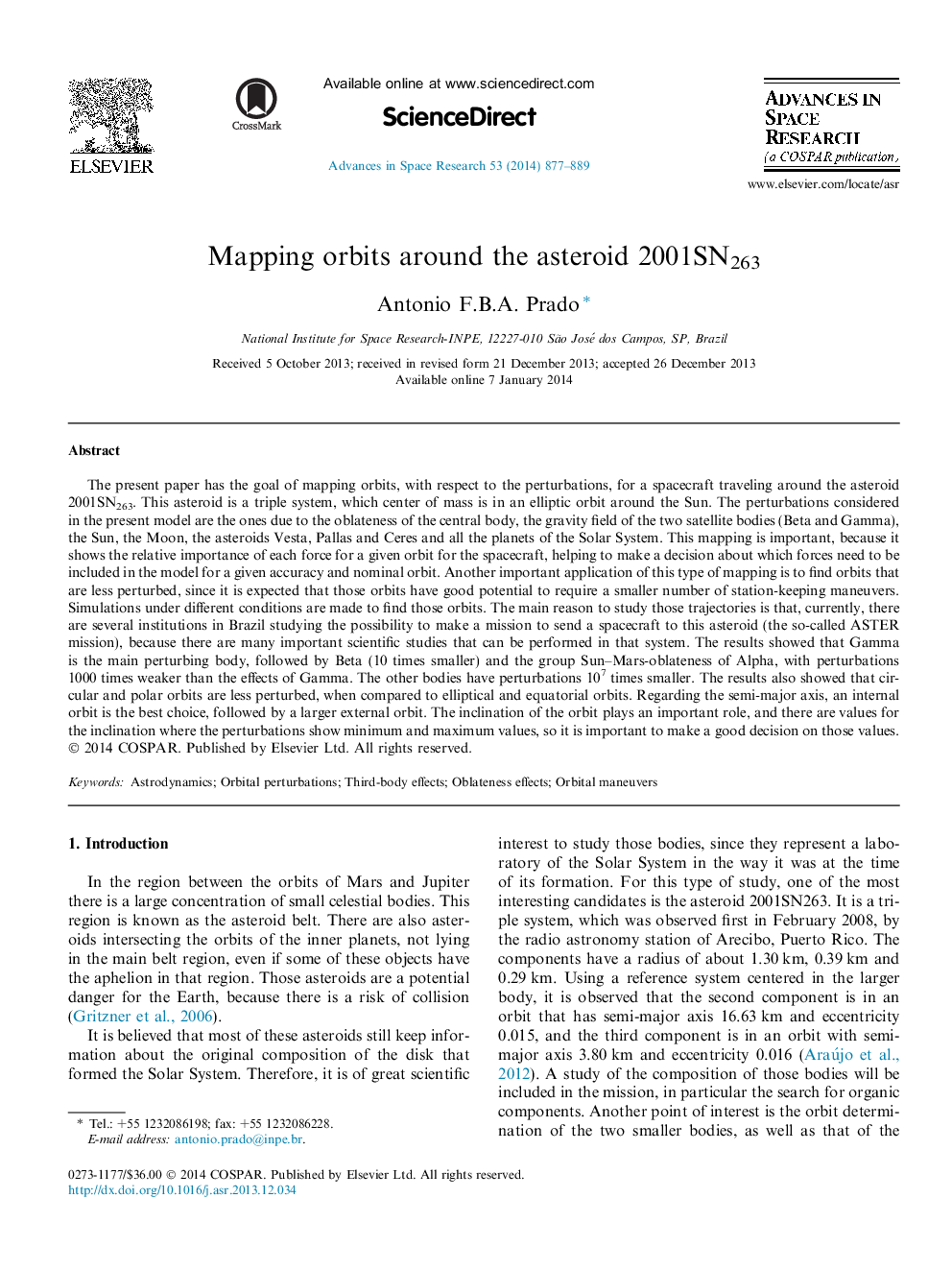| Article ID | Journal | Published Year | Pages | File Type |
|---|---|---|---|---|
| 1763905 | Advances in Space Research | 2014 | 13 Pages |
•Use of a new form to search for orbits for spacecrafts.•Use of a new form to understand the dynamics.•Study the forces involved in a triple asteroid.•Quantify the effects changing each orbital elements of the orbit of the spacecraft.
The present paper has the goal of mapping orbits, with respect to the perturbations, for a spacecraft traveling around the asteroid 2001SN263. This asteroid is a triple system, which center of mass is in an elliptic orbit around the Sun. The perturbations considered in the present model are the ones due to the oblateness of the central body, the gravity field of the two satellite bodies (Beta and Gamma), the Sun, the Moon, the asteroids Vesta, Pallas and Ceres and all the planets of the Solar System. This mapping is important, because it shows the relative importance of each force for a given orbit for the spacecraft, helping to make a decision about which forces need to be included in the model for a given accuracy and nominal orbit. Another important application of this type of mapping is to find orbits that are less perturbed, since it is expected that those orbits have good potential to require a smaller number of station-keeping maneuvers. Simulations under different conditions are made to find those orbits. The main reason to study those trajectories is that, currently, there are several institutions in Brazil studying the possibility to make a mission to send a spacecraft to this asteroid (the so-called ASTER mission), because there are many important scientific studies that can be performed in that system. The results showed that Gamma is the main perturbing body, followed by Beta (10 times smaller) and the group Sun–Mars-oblateness of Alpha, with perturbations 1000 times weaker than the effects of Gamma. The other bodies have perturbations 107 times smaller. The results also showed that circular and polar orbits are less perturbed, when compared to elliptical and equatorial orbits. Regarding the semi-major axis, an internal orbit is the best choice, followed by a larger external orbit. The inclination of the orbit plays an important role, and there are values for the inclination where the perturbations show minimum and maximum values, so it is important to make a good decision on those values.
